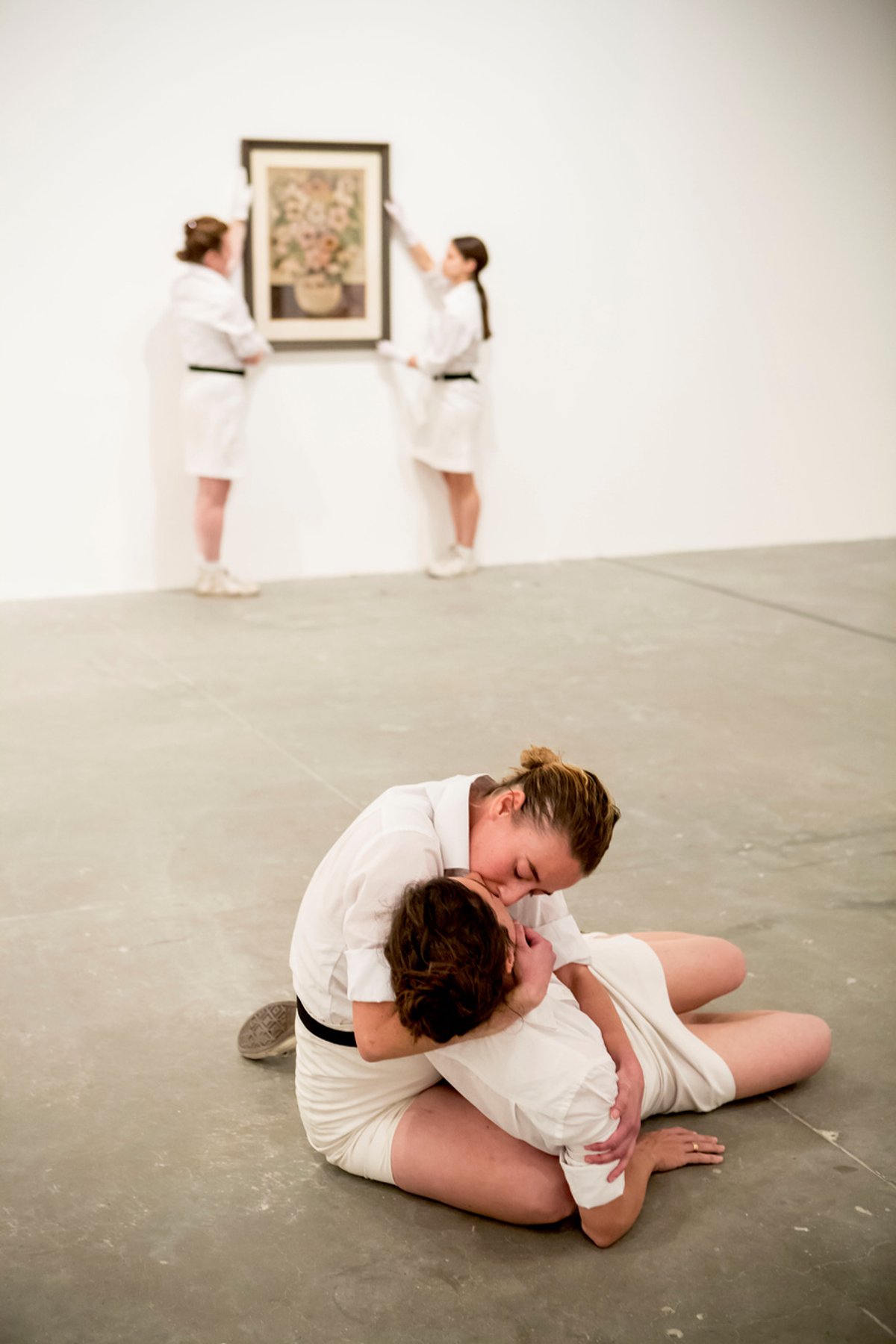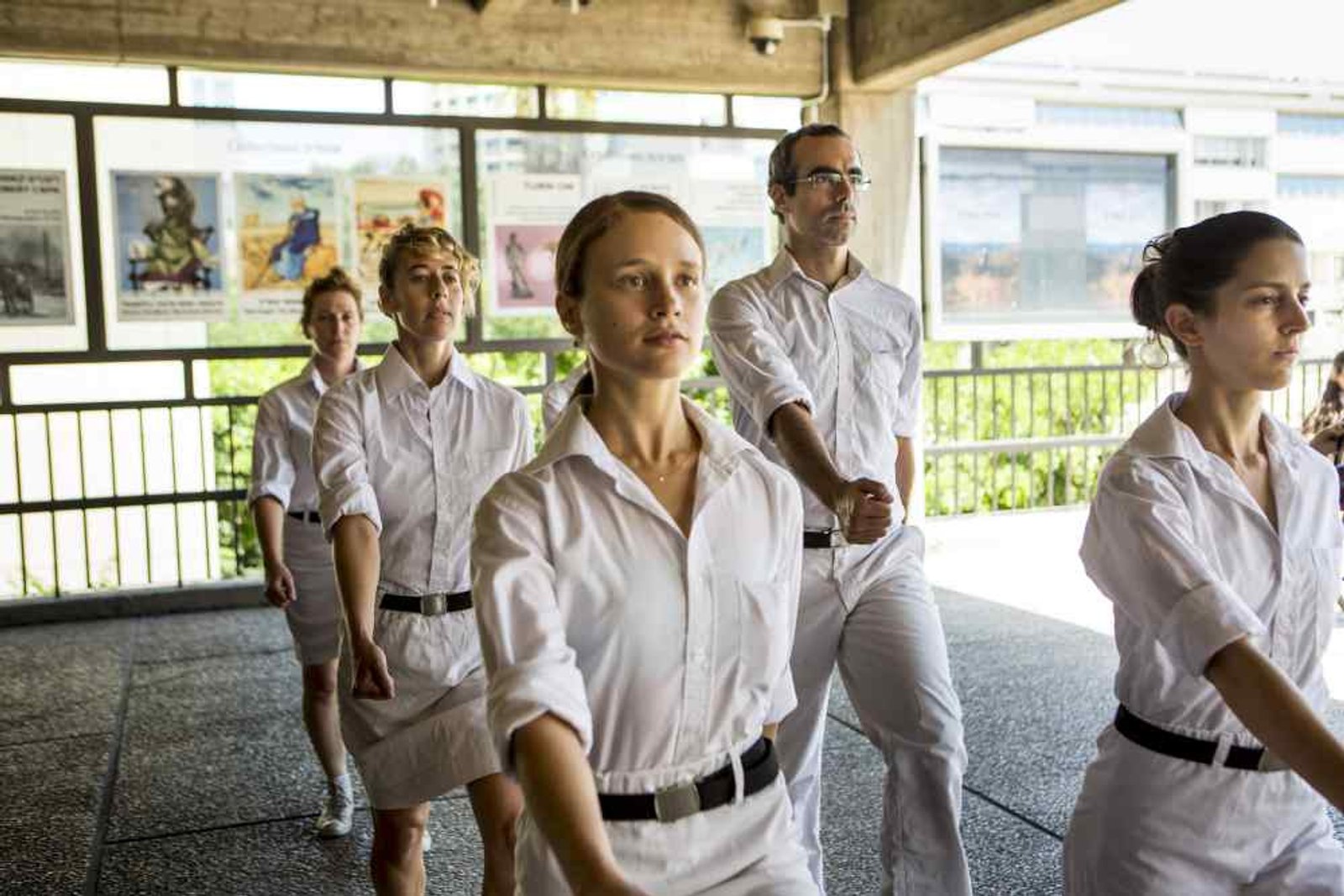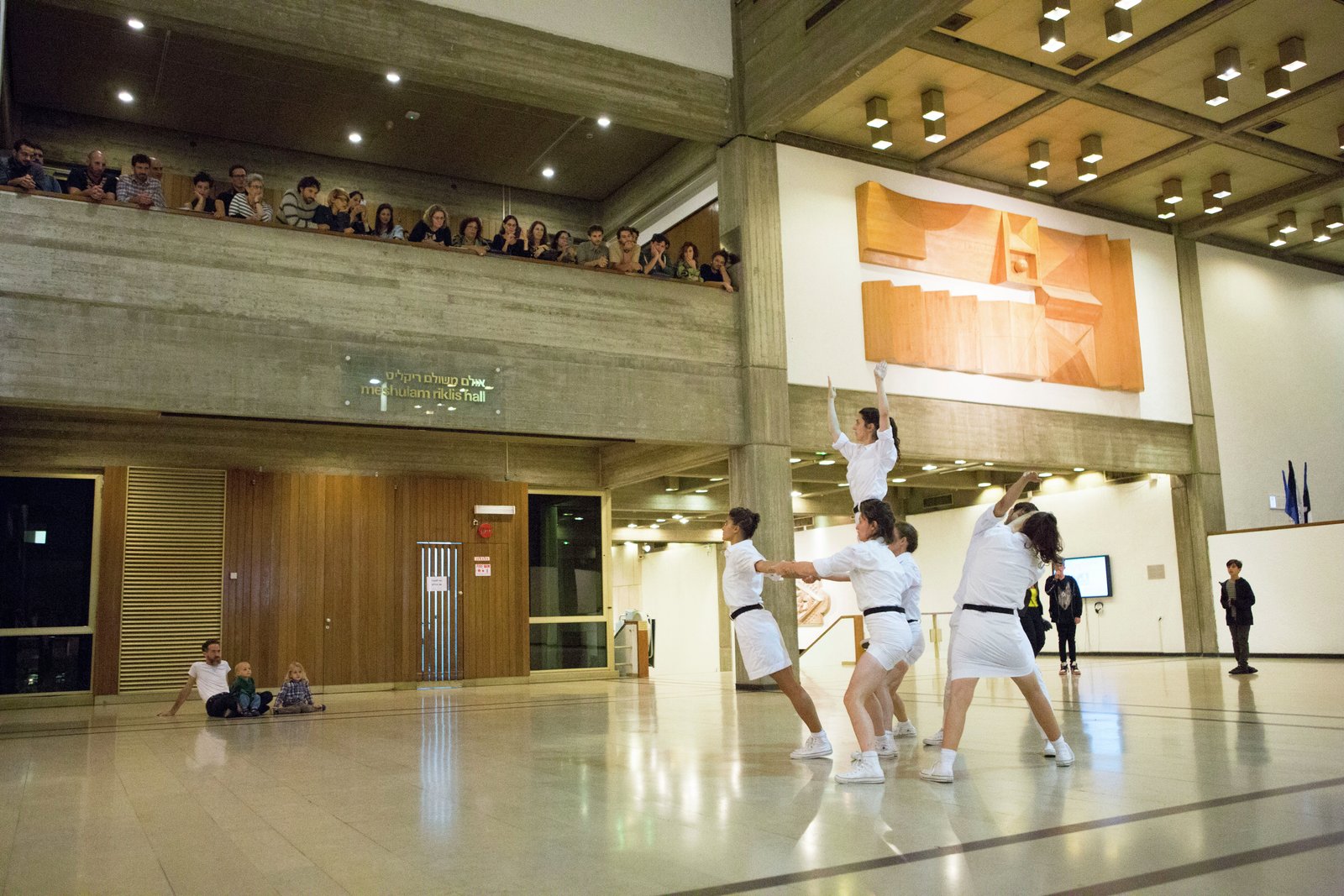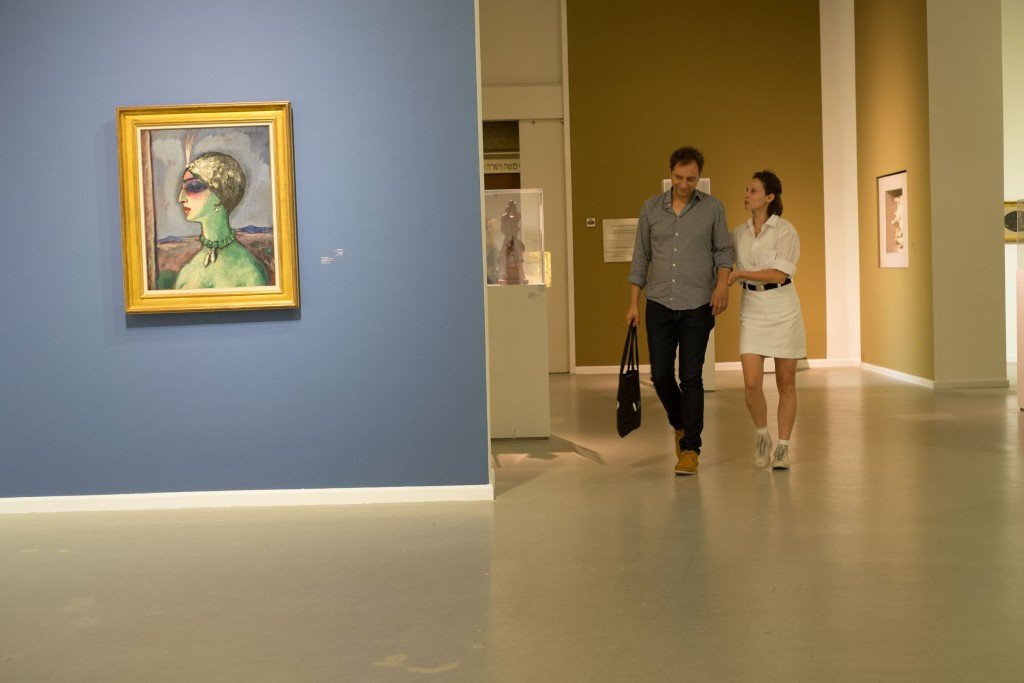Public Movement is a performative research group which investigates and stages political actions in public spaces. It studies and creates public choreographies, forms of social order, overt and covert rituals. Public Movement’s project was an online publication that included a collection of theoretical essays, as well as stills and video materials collected during the running period of the exhibition "National Collection" at the Tel Aviv Museum of Art (October-December 2015). The project aimed to explore and suggest new methods to translate the performative act into a visual and theoretical format, using the experience of creating and performing National Collection as a case study. An archive of the project is viewable here.

Grantee Spotlight: Public Movement presents “National Collection” and “Public Record”
This essay was originally published in December 2015 as part of the Artis Journal blog, a series of essays and artist interviews exploring artistic practice and timely topics in contemporary art from Israel. The Artis Journal blog was active from 2015-2016.
Anyone entering the Tel Aviv Museum of Art these days might bump into a group of young people clad in white uniforms jumping, running, performing anecdotal ceremonies, shouting and basically doing everything we were always told we cannot do in museums. These activities, which are often observed with astonishment by museum visitors, are part of the performative exhibition “National Collection” of work by the artist group Public Movement that was commissioned by the museum (on view from October-December, 2015).
“National Collection” is a result of two years of research about the Tel Aviv Museum of Art, that reveals the co-dependency that exists between the museum and the state, in which the rationale of the two institutions shapes and determines the other.
The exhibition, which is the first of its kind to be commissioned by the Tel Aviv Museum, raises many questions about the way we view art and the way we navigate throughout a museum. Much like works of other artists who have taken over the museum space for performative actions (i.e. Martin Creed at Tate Britain and Tino Sehgal at the Guggenheim) “National Collection,” is a performative museum exhibition, which is realized as a durational performance where visitors are led throughout the museum’s halls, and through its work and storage areas. In this way, visitors participate in a carefully orchestrated procession of movements.
Following the run of the exhibition, a new chapter of the project will begin, titled “Public Record”, which is realized with the support of an Artis Project Grant (awarded in 2015). While not a catalog, “Public Record” will be a visual document of the development of this unique live exhibition, including the encounters between audiences coming to take part in the performance, and the performance, itself. The document will be recorded in video and still photographs and will be composed into a film work, complemented by the presentation of research materials - interviews, sketches, choreographic notes, and scripts.
Concurrently, Public Movement invited three writers and scholars to reflect and reference “National Collection”, while also thinking beyond it - exploring the idea of activation of politics within the museum. The group hopes that these essays will create a theoretical “set” that explores three themes which arise from this project and Public Movement’s oeuvre: performance-based exhibitions, changing the institution, and state choreography.
As in the words of Dana Yahalomi, co-founder of Public Movement “this new non-catalogue will be Public Movement’s first public record, sharing our discussions on performance as a political act that led us through a decade of activity. We have never published documentation of our actions, our research usually remains discrete and no catalogue exists. By opening up to dialogue with other writers and theoreticians, we hope to create a discursive platform which will be accessible to peers, to refer and reflect on their own work, thus will nurture back into Public Movement’s practice.”





